Welcome to Los Altos, where the sky is alive with the vibrant colors and sounds of birds! Los Altos is a haven for birdwatchers, with a wide variety of habitats and species to observe.
From the majestic red-tailed hawks soaring overhead to the delicate song of the western meadowlark in the meadows, to the colorful finches and warblers flitting among the trees in the hills, the birds of Los Altos will bring you hours of enjoyment.
Whether you’re a novice or an experienced birder, you’re sure to find something to enjoy in this diverse and vibrant avian community!.
1. Hummingbirds
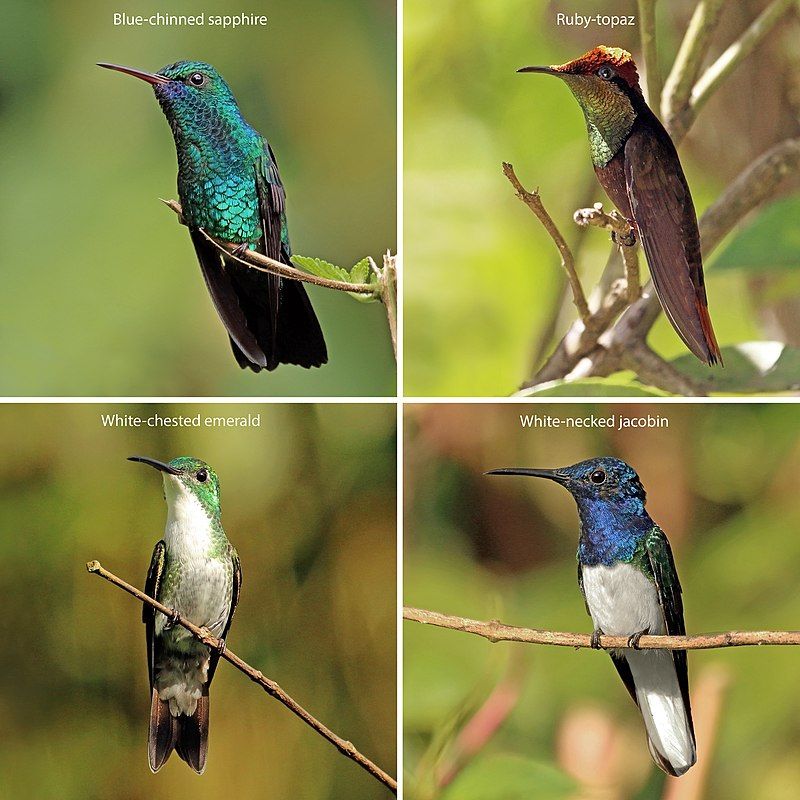
Hummingbirds are a type of bird found exclusively in the Americas and are members of the scientific family Trochilidae.
This family of birds is incredibly diverse, with more than 366 species and 113 genera spread out across the entire American continent, from Alaska in the north to Tierra del Fuego in the south. However, the majority of species are concentrated in Central and South America.
Hummingbirds are a very diverse group of birds, with a wide variety of sizes, colors, and behaviors. They are known for their incredible agility and speed in flight, as well as their incredibly long beaks, which they use to feed on nectar from flowers.
Hummingbirds are also well-adapted to living in a variety of habitats, from tropical rainforests to high-altitude deserts. Despite their small size, hummingbirds are a very important part of many ecosystems, providing essential pollination services to many plants and flowers.
| Kingdom | Animalia |
| Phylum | Chordata |
| Class | Aves |
| Clade | Strisores |
| Order | Apodiformes |
| Family | Trochilidae |
2. House Finch
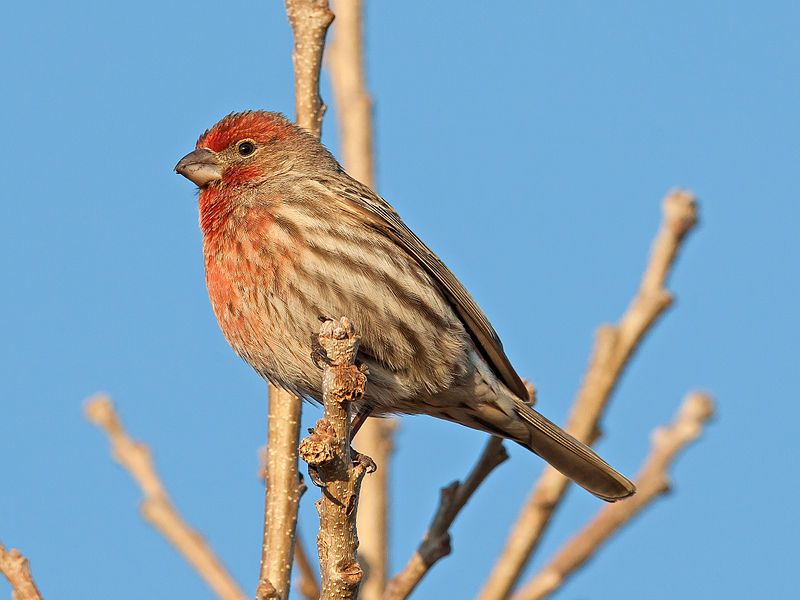
The house finch is a species of bird belonging to the finch family Fringillidae. It is natively found in western North America but has since been introduced to the eastern half of the continent and Hawaii.
This bird, along with two other American rosefinches, is categorized under the genus Haemorhous. The house finch is a small bird with a wide variety of colors. It is typically identified by its brownish-red coloration, with a white belly and a reddish-brown head and wings.
Its size ranges from 13-15 cm in length, and it typically weighs between 17-24 grams. It is also identified by its call, which is a two-note song.
The house finch is a highly adaptable species, which has allowed for its introduction to the eastern half of the continent and Hawaii. It is found in a variety of habitats, such as open woodlands, grasslands, and even urban areas.
It prefers to nest in cavities, and can often be seen searching for food on the ground. It typically feeds on small seeds, fruits, and insects. The house finch is considered to be a common species, with a population estimated at around 100 million.
It is not currently threatened or endangered, and its population is believed to be stable.
| Kingdom | Animalia |
| Phylum | Chordata |
| Class | Aves |
| Order | Passeriformes |
| Family | Fringillidae |
| Genus | Haemorhous |
| Species | H. mexicanus |
3. Anna’s Hummingbird
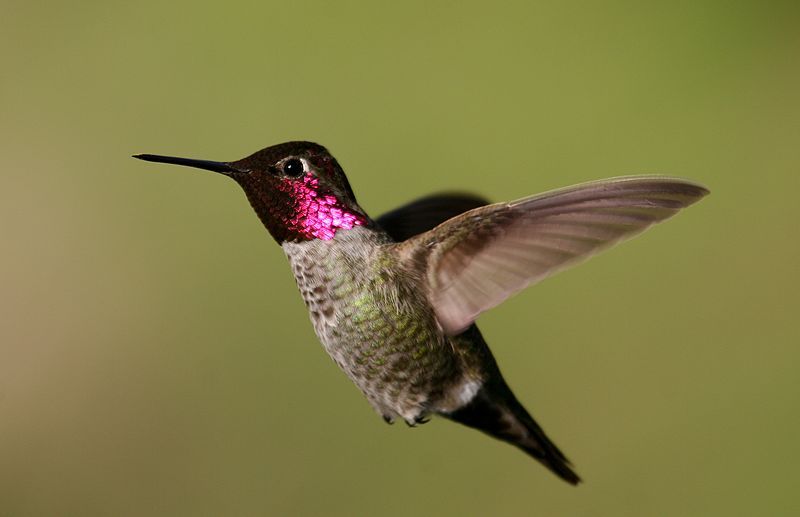
Anna’s hummingbird is a species of bird from the family Trochilidae, which is native to the western coastal regions of North America. It is a medium-sized bird, typically measuring around 4 inches in length with greenish-blue wings and a white underside.
It is named after Anna Masséna, Duchess of Rivoli in tribute to her patronage of the arts. In the early 20th century, Anna’s hummingbirds were only found breeding in Northern Baja California and Southern California.
As the years passed, however, the species spread further north, eventually reaching the Pacific Northwest. The bird is now a common sight in many parts of the United States and Canada.
Anna’s hummingbirds are known to be particularly aggressive in defending their territory and protecting their young. This is because they are a small species and can be easily preyed upon by larger birds.
As such, they will fiercely defend their nests and chase away any intruders. Anna’s hummingbird is a beautiful species of bird that has become a popular subject of study and admiration in recent years.
Its vivid colors and active behavior make it a fascinating sight to behold. It is also an important pollinator, helping to spread the pollen of the flowers it visits. For these reasons, the species is a beloved sight in many gardens and parks.
| Kingdom | Animalia |
| Phylum | Chordata |
| Class | Aves |
| Clade | Strisores |
| Order | Apodiformes |
| Family | Trochilidae |
| Genus | Calypte |
| Species | C. anna |
4. Mourning Dove
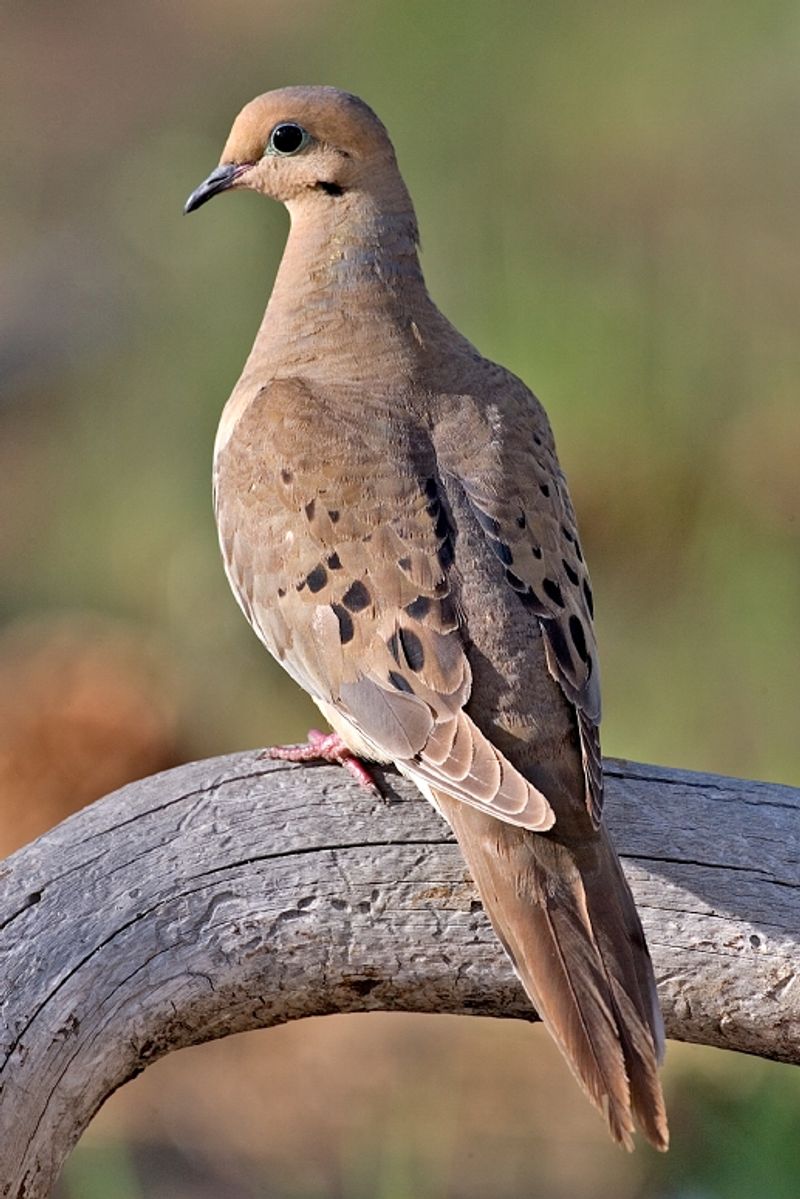
The mourning dove is a species of bird belonging to the family Columbidae, which includes pigeons and doves. It is native to the Americas and is also known by several other names, including the American mourning dove, the rain dove, and colloquially the turtle dove.
In the past, the mourning dove was also referred to as the Carolina pigeon and Carolina turtledove. These birds are found throughout North and South America, with some species ranging further north into Canada and south into parts of South America.
They are medium-sized birds that are typically gray or brown in color, and they are known to make a soft, low-pitched call that can be heard from long distances. They feed on seeds, fruits, and invertebrates, and they are usually found in open areas, such as fields and meadows.
Mourning doves are monogamous and typically form long-lasting pairs that will return to the same nesting site each year. These birds are an important part of the ecosystem and play a vital role in seed dispersal and maintaining plant diversity.
| Kingdom | Animalia |
| Phylum | Chordata |
| Class | Aves |
| Order | Columbiformes |
| Family | Columbidae |
| Genus | Zenaida |
| Species | Z. macroura |
5. Dark-Eyed Junco
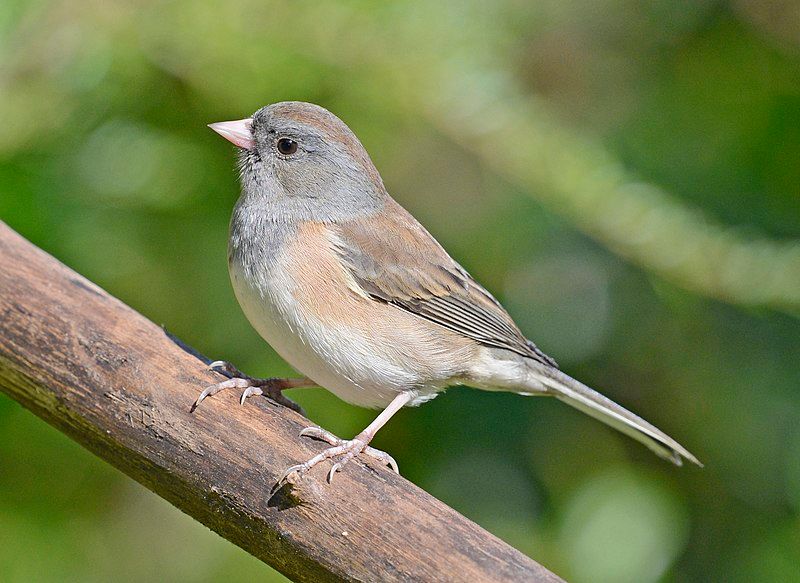
The dark-eyed junco is a species of junco, a family of small grayish sparrows native to North America. This bird is widespread across the continent, with its range extending all the way up into the Arctic in summer.
It is a highly variable species, much like the fox sparrow, and its taxonomy is still not fully understood. The dark-eyed junco is a small bird, measuring between 4.5-6 inches in length. It has a brownish-gray head and back, with a white underside and black “hood” on its head.
It is found in a variety of habitats, from woodlands to open fields to urban locations. The diet of the dark-eyed junco consists mainly of insects and seeds. It forages on the ground, often scratching at the soil in search of food.
It also feeds on berries and other fruits in the summer. The dark-eyed junco is a social bird, and they often form large flocks in winter. In the summer, they typically breed in pairs or small family groups.
The female builds the nest, and both parents feed the young. The dark-eyed junco is a common sight across much of temperate North America. While its range and population are stable, it is vulnerable to habitat destruction and other human-induced threats.
With the proper conservation efforts, this species can be protected and its populations preserved for future generations.
| Kingdom | Animalia |
| Phylum | Chordata |
| Class | Aves |
| Order | Passeriformes |
| Family | Passerellidae |
| Genus | Junco |
| Species | J. hyemalis |
6. California Scrub Jay
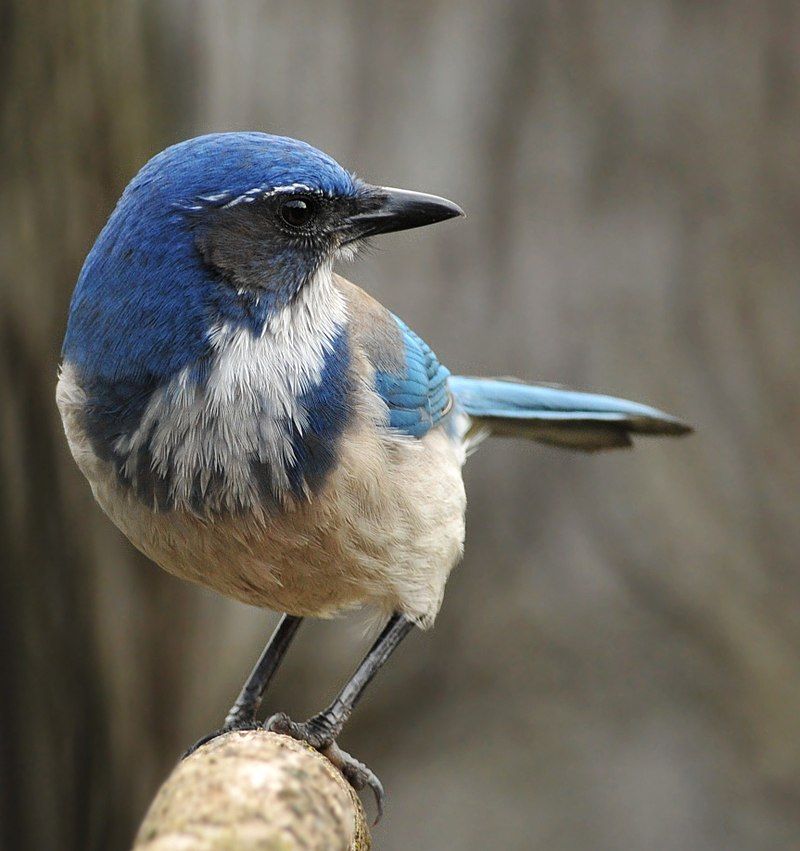
The California Scrub Jay is a delightful bird species that is native to western North America. It is found in a wide range of habitats, ranging from southern British Columbia to the western parts of Nevada and California.
It is also present in areas near Reno and west of the Sierra Nevada. This species loves the warm and sunny climate of the western parts and can be identified by its distinct blue plumage.
Its wings, tail, and head are a striking blue color, while its underparts are a lighter grey. It also has a black line running through its eyes and beak. The California Scrub Jay is a highly intelligent bird and is known for its curious and inquisitive nature.
It is a social species and can often be seen in flocks foraging for food in gardens and parks. It also uses a variety of vocalizations to communicate with others of its species. Its diet consists mainly of insects, fruits, and nuts.
It is also known to cache food items for later consumption. The California Scrub Jay is an important species to the environment, as it helps to spread native plant species. It collects the seeds of native plants and then carries them to new areas, which helps to disperse the plants.
It also helps to control insect populations by consuming them. Overall, the California Scrub Jay is a delightful and intelligent species that plays an important role in the environment. Its striking blue plumage and curious nature make it a captivating species to observe.
| Kingdom | Animalia |
| Phylum | Chordata |
| Class | Aves |
| Order | Passeriformes |
| Family | Corvidae |
| Genus | Aphelocoma |
| Species | A. californica |
7. Red-Tailed Hawk
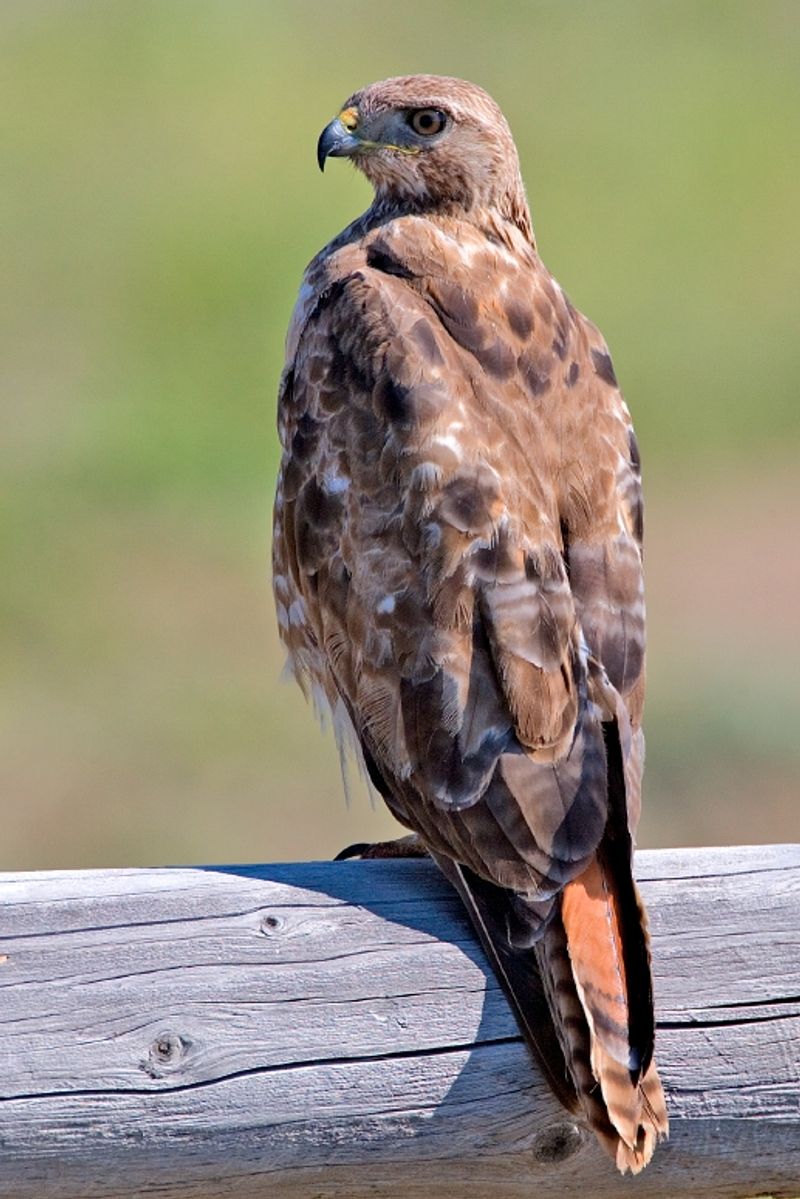
The red-tailed hawk is a bird of prey that is found across a large swath of the continent of North America. It is native to Alaska and northern Canada, and it can also be found as far south as Panama and the West Indies.
Red-tailed hawks are part of the genus Buteo, which is one of the most common genera of birds in North America and around the world. These hawks are known for their sharp eyesight, which they use to spot prey on the ground.
They also have a distinctive call and can be seen soaring above fields and forests. Red-tailed hawks are a vital part of the environment, helping to keep prey populations in check and supporting the balance of nature.
| Kingdom | Animalia |
| Phylum | Chordata |
| Class | Aves |
| Order | Accipitriformes |
| Family | Accipitridae |
| Genus | Buteo |
| Species | B. jamaicensis |
8. Northern Mockingbird
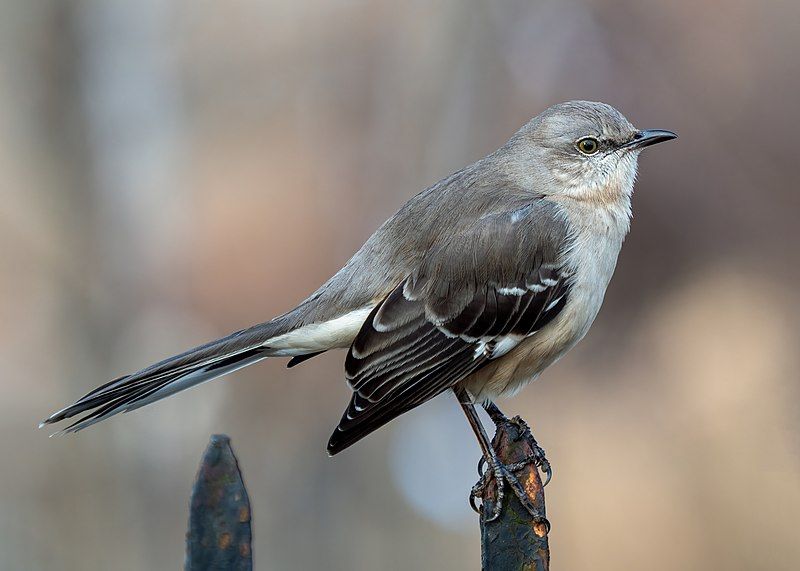
The northern mockingbird is a species of mockingbird that is commonly seen in North America. It is mostly a permanent resident, but in times of cold weather, some northern birds may migrate south. Interestingly, this species has rarely been seen in Europe.
The northern mockingbird is a songbird known for its melodious singing. It has a gray back, white belly, and black wings with white patches. Its wingspan is approximately 10-12 inches in length.
They typically inhabit open woodlands, gardens, and shrubs. The northern mockingbird is primarily insectivorous, but they also feed on fruits and berries. They are active during the day and are known to be quite territorial.
They can often be seen perched on branches, fenceposts, or telephone wires, singing their distinctive songs. The northern mockingbird is an important symbol of the American South. It is the state bird of Arkansas, Florida, Mississippi, Tennessee, and Texas.
It has been celebrated in literature and music and was featured in the 1952 classic film, To Kill a Mockingbird. The northern mockingbird is an iconic species found in North America. It is a permanent resident in most places but may migrate south in harsh weather.
This species has rarely been observed in Europe. It is a beautiful songbird that is a symbol of the American South and has been celebrated in literature and film.
| Kingdom | Animalia |
| Phylum | Chordata |
| Class | Aves |
| Order | Passeriformes |
| Family | Mimidae |
| Genus | Mimus |
| Species | M. polyglottos |
9. Lesser Goldfinch
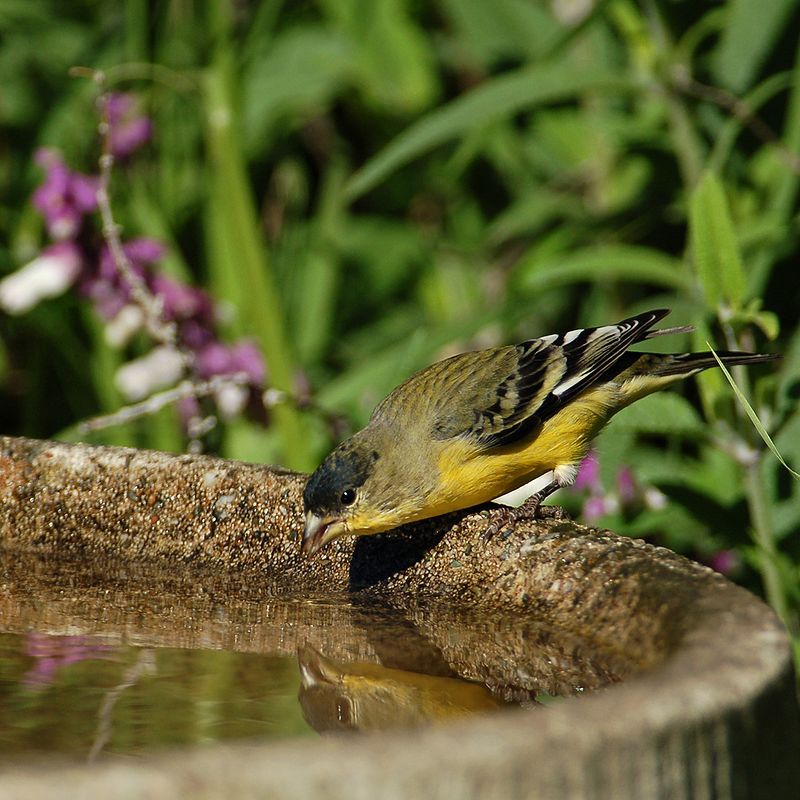
The lesser goldfinch is a small, colorful species of songbird found in the Americas. It is a part of the New World goldfinch clade, which also includes the American goldfinch and Lawrence’s goldfinch. Male lesser goldfinches have a distinct black forehead which females lack.
This is true of all three species of New World goldfinches. The lesser goldfinch is small in size, measuring around 4 inches in length, and is typically a yellow-green color with a white belly and black wings. It has a pointed bill and two white wing bars.
It is an insectivore, mainly feeding on small insects and spiders, and sometimes on seeds. It is an active bird, often seen flitting between branches.
During the breeding season, males will perform a courtship display of song and flight, which involves singing and fluttering in midair.
| Kingdom | Animalia |
| Phylum | Chordata |
| Class | Aves |
| Order | Passeriformes |
| Family | Fringillidae |
| Genus | Spinus |
| Species | S. psaltria |
10. Black Phoebe
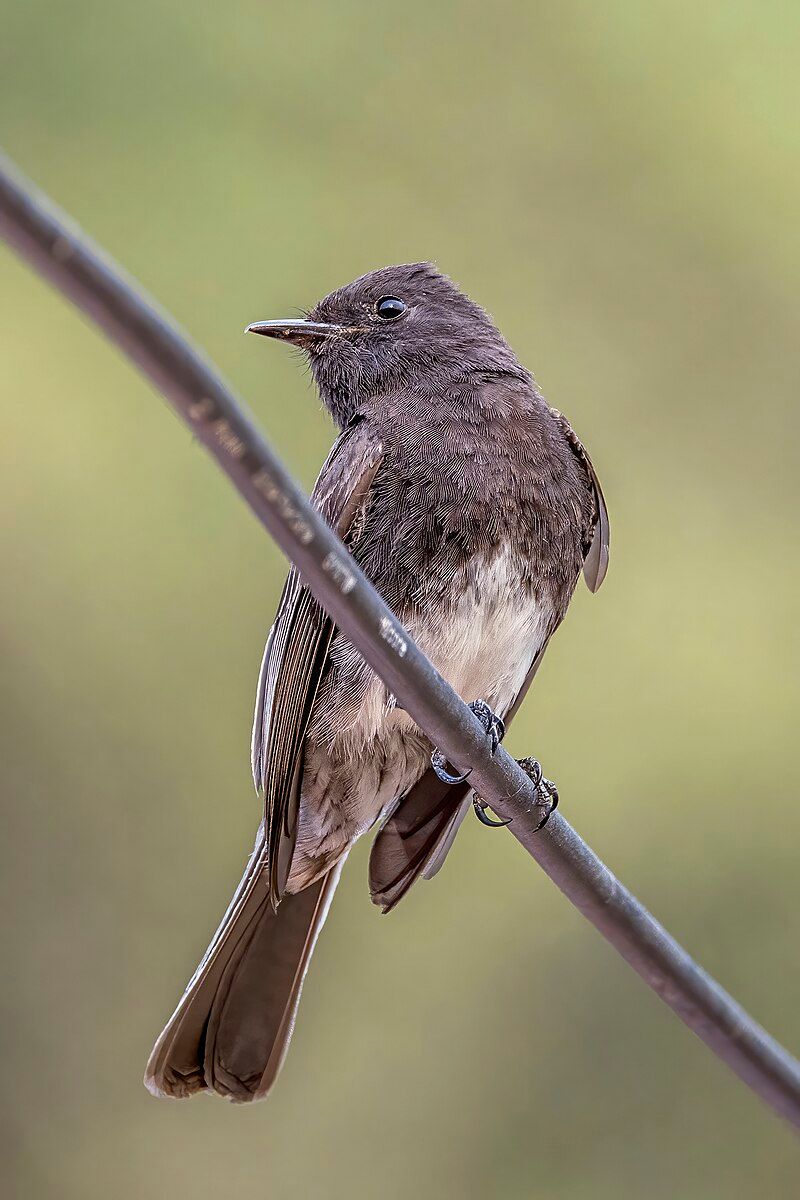
The black phoebe is a species of bird belonging to the family of tyrant flycatchers. This bird is mainly found in the regions of southwest Oregon, California, Central America, and South America.
It is notable for having a year-round presence in most of its habitat, as opposed to other species of its genus which are known to migrate more frequently. However, some of the northern populations of the black phoebe do migrate, though not as extensively as its relatives.
| Kingdom | Animalia |
| Phylum | Chordata |
| Class | Aves |
| Order | Passeriformes |
| Family | Tyrannidae |
| Genus | Sayornis |
| Species | S. nigricans |
11. White-Crowned Sparrow
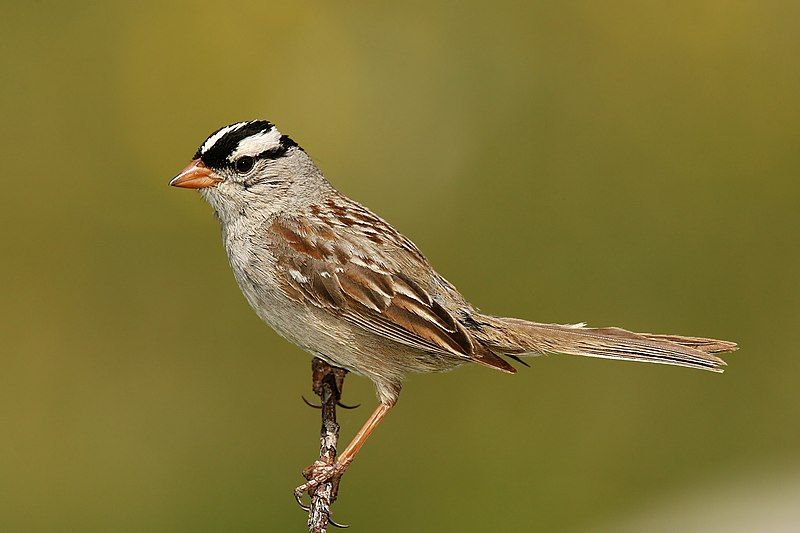
The white-crowned sparrow is a type of bird that is found in North America. It is part of the New World sparrow family and is medium-sized compared to other members of the family.
The bird has a distinctive grey face and a black-and-white streaking pattern on the upper part of its head. This streaking pattern is unique to the white-crowned sparrow and helps to distinguish it from other birds.
The white-crowned sparrow can be found in a variety of habitats, from forests to wetlands, and is a common sight in many parts of North America. It feeds mainly on insects and seeds and is often seen in flocks.
The white-crowned sparrow is an important part of North America’s ecosystem, as their presence helps to keep insect populations in check.
| Kingdom | Animalia |
| Phylum | Chordata |
| Class | Aves |
| Order | Passeriformes |
| Family | Passerellidae |
| Genus | Zonotrichia |
| Species | Z. leucophrys |
12. American Robin
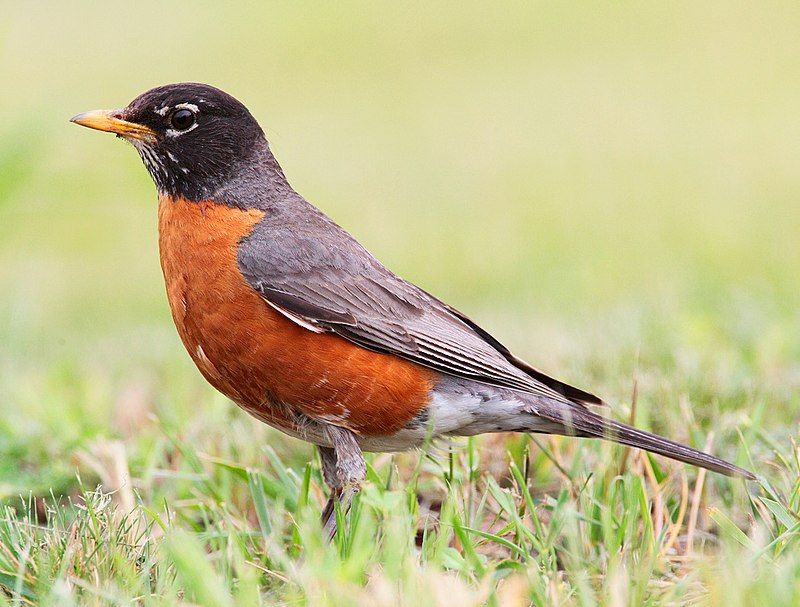
The American robin is a migratory bird of the true thrush genus and the Turdidae family, which is a larger group of thrushes. This bird is named after the European robin because they share a similar reddish-orange breast, even though the two species are not closely related.
The European robin is actually part of a different family, the Old World flycatcher family. The American robin is commonly found throughout North America and plays an important role in the ecosystem. It eats insects and fruit and helps to spread the seeds of plants.
During the winter, many of them migrate to more temperate climates in the south.
| Kingdom | Animalia |
| Phylum | Chordata |
| Class | Aves |
| Order | Passeriformes |
| Family | Turdidae |
| Genus | Turdus |
| Species | T. migratorius |
13. Cooper’s Hawk

Cooper’s Hawk, also known as Accipiter cooperii, is a medium-sized hawk species native to the North American continent. It is found predominantly in North America, stretching from southern Canada to Mexico.
This hawk is a member of the Accipitridae family of raptors, which includes other hawk species like the Northern Goshawk. It is considered to be a woodland hawk, and as such, it prefers habitats with trees and shrubs, such as forests and woodlands.
Cooper’s Hawks are quite distinct in their physical characteristics. They have long tails and a large wingspan that can reach up to 40 inches. They have a grey back and chest, with reddish-brown barring on their sides and belly.
The head is usually quite light in color, and the eyes are a bright yellowish-orange. The beak is large and powerful and is used for capturing prey. In terms of diet, Cooper’s Hawks mainly feed on small mammals like voles, squirrels, and rabbits.
They also eat birds, reptiles, and amphibians, as well as the occasional insect. They hunt by flying low to the ground and quickly swooping up to capture their prey. They can also be quite aggressive, and will often harass other animals in their territory.
Cooper’s Hawks are quite common throughout their range and are often seen in parks and gardens. They are also quite vocal, producing a variety of calls and vocalizations, including a loud, sharp “kee-eee-arr” sound.
They are very territorial birds and can be quite aggressive when it comes to defending their territory. All in all, Cooper’s Hawks are a fascinating species of birds.
With their bold and colorful plumage and their impressive hunting skills, they are sure to fascinate anyone who comes across them. They are also quite common throughout their range, making them a great species to observe and appreciate.
| Kingdom | Animalia |
| Phylum | Chordata |
| Class | Aves |
| Order | Accipitriformes |
| Family | Accipitridae |
| Genus | Accipiter |
| Species | A. cooperii |
14. Spotted Towhee
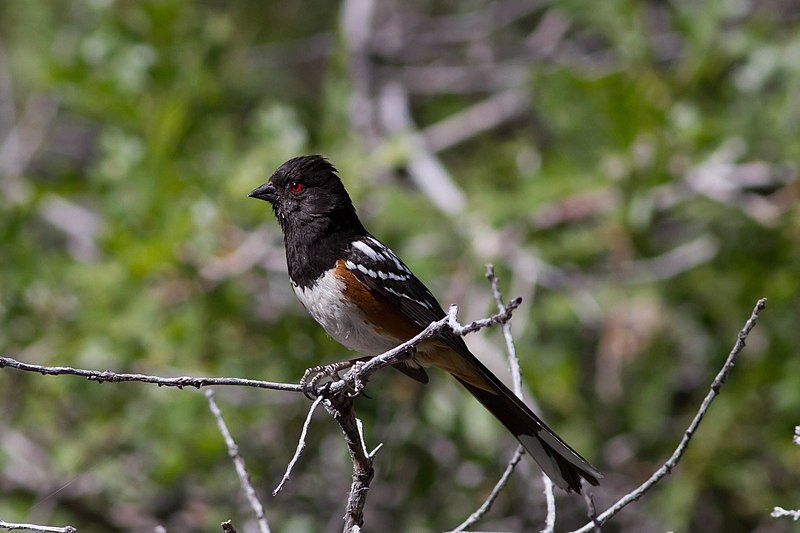
The spotted towhee is a large species of New World sparrow, belonging to the family Emberizidae. It was first described in 1885 by ornithologist Robert Ridgway.
The taxonomy of the towhees has been debated in recent decades, and until 1995 it was believed that the spotted towhee and the eastern towhee were a single species, known as the rufous-sided towhee. The two species were then separated and given distinct scientific names.
Another outdated name for the spotted towhee is the Oregon towhee. This name was used in the past to refer to both the spotted towhee and the eastern towhee. However, in recent years, the term has become synonymous with the spotted towhee only.
The spotted towhee is a medium-sized bird, ranging in length from 17-21 cm. It has a long tail, a large bill, and rufous wings. The head, throat, and upper breast of the bird are black, while the back, wings, and tail are reddish-brown.
Its underparts are white with black spotting. The spotted towhee is found across North America, from the western United States to the Atlantic coast. It prefers brushy habitats, such as thickets and woodlands, but it can also be found in gardens and parks.
| Kingdom | Animalia |
| Phylum | Chordata |
| Class | Aves |
| Order | Passeriformes |
| Family | Passerellidae |
| Genus | Pipilo |
| Species | P. maculatus |
15. Western Bluebird
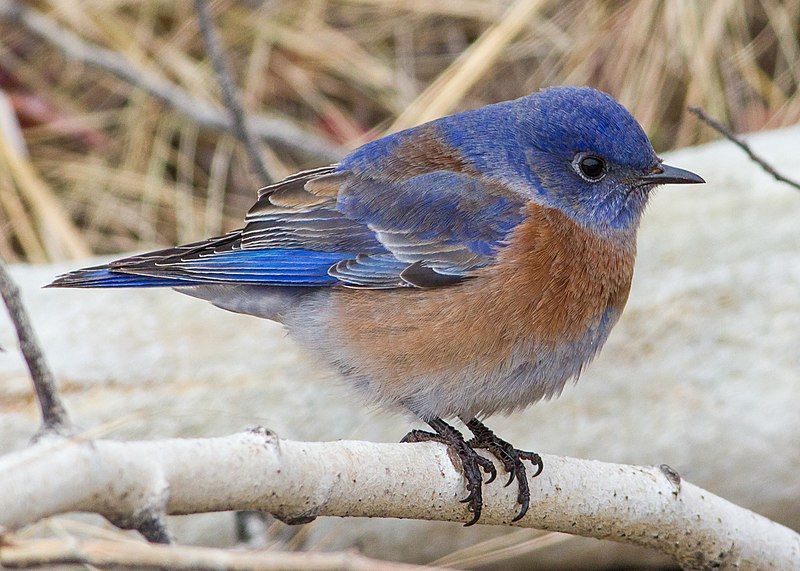
The western bluebird is a species of small songbird native to North America. It belongs to the thrush family, a group of birds which are well known for their melodic singing.
The western bluebird is a medium-sized songbird, reaching a length of around 7 inches and a wingspan of about 10 inches. It has a bright blue head, back, and tail with a pale chest and white belly.
The western bluebird is a cavity nester, which means that it prefers to nest in holes in trees or walls. Its diet consists mainly of insects, berries, and other small invertebrates.
The western bluebird is a popular bird, often seen in open areas such as fields, meadows, and parks. It is a social bird, often seen in small flocks, and is a popular sight for birdwatchers.
| Kingdom | Animalia |
| Phylum | Chordata |
| Class | Aves |
| Order | Passeriformes |
| Family | Turdidae |
| Genus | Sialia |
| Species | S. mexicana |
16. Golden-Crowned Sparrow
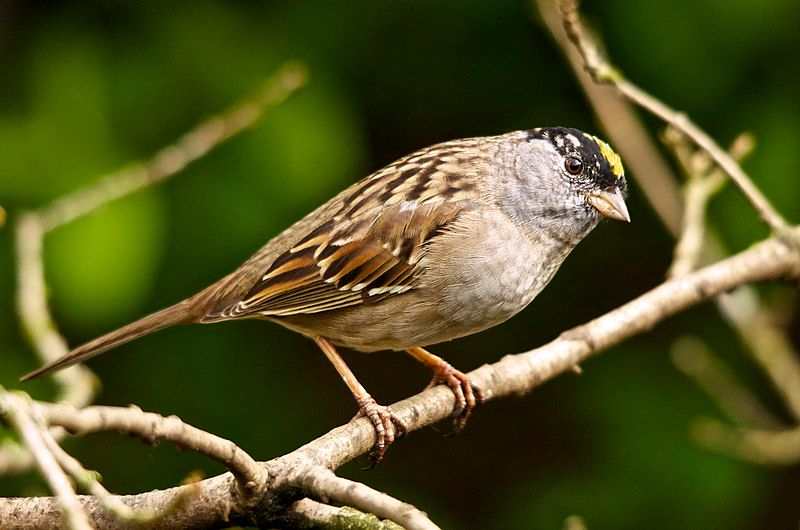
The golden-crowned sparrow is a species of bird native to the western part of North America. It is considered a large sparrow, measuring around 5 inches in length, and has a distinctive golden-orange stripe on the crown of its head.
This visually striking bird is a migratory species and can be found in its breeding range throughout the Pacific Northwest and Alaska.
Outside of the breeding season, it can be seen in parts of California, Oregon, and Washington. The golden-crowned sparrow is a social creature, often gathering in flocks of up to a hundred individuals.
It is an omnivore, feeding on a variety of seeds, insects, and berries, depending on the season. It nests in trees, shrubs, and other vegetation, and prefers areas with dense vegetation for protection from predators.
The golden-crowned sparrow is an important species in its range, providing food for a variety of animals, and helping to disperse seeds and regenerate vegetation.
| Kingdom | Animalia |
| Phylum | Chordata |
| Class | Aves |
| Order | Passeriformes |
| Family | Passerellidae |
| Genus | Zonotrichia |
| Species | Z. atricapilla |
17. Oak Titmouse
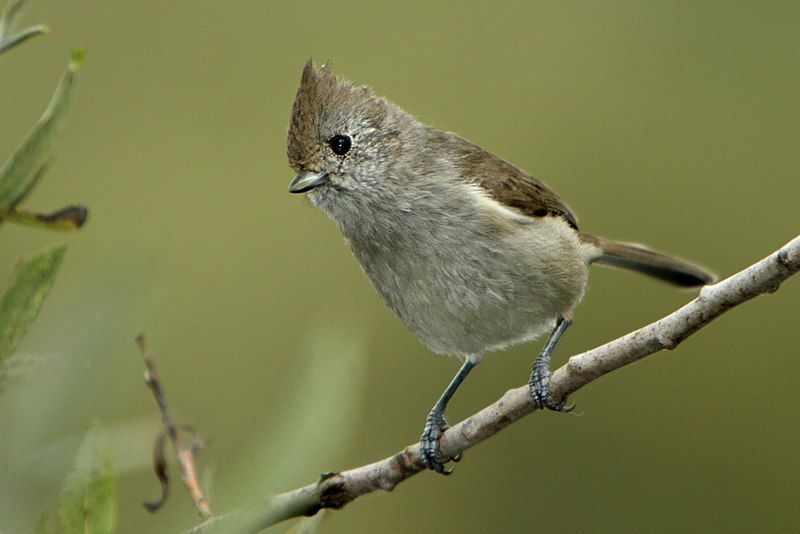
The oak titmouse is a type of bird belonging to the family Paridae, which includes other titmice and chickadees. It is a passerine, meaning it is a perching bird that feeds on insects and other small invertebrates.
The American Ornithologists’ Union (AOU) recognized the oak titmouse as a species in its own right in 1996, distinguishing it from the plain titmouse.
This decision was based on differences in the birds’ songs, preferred habitats, and genetic makeup. The oak titmouse is found in western North American forests, particularly oak woodlands in California and the Great Basin.
It has a distinct, high-pitched song that is more complex than that of its plain titmouse relative. The oak titmouse also prefers to feed on acorns, while the plain titmouse is more likely to feed on other types of seeds.
Finally, genetic analysis has revealed that the two species are distinct genetically, further confirming the need for separate classification. Overall, the oak titmouse is a distinct species from the plain titmouse and is deserving of its own recognition.
Its distinct songs, preferred habitat, and genetic makeup all serve to highlight the differences between these two titmouse species.
| Kingdom | Animalia |
| Phylum | Chordata |
| Class | Aves |
| Order | Passeriformes |
| Family | Paridae |
| Genus | Baeolophus |
| Species | B. inornatus |
18. Chestnut-Backed Chickadee
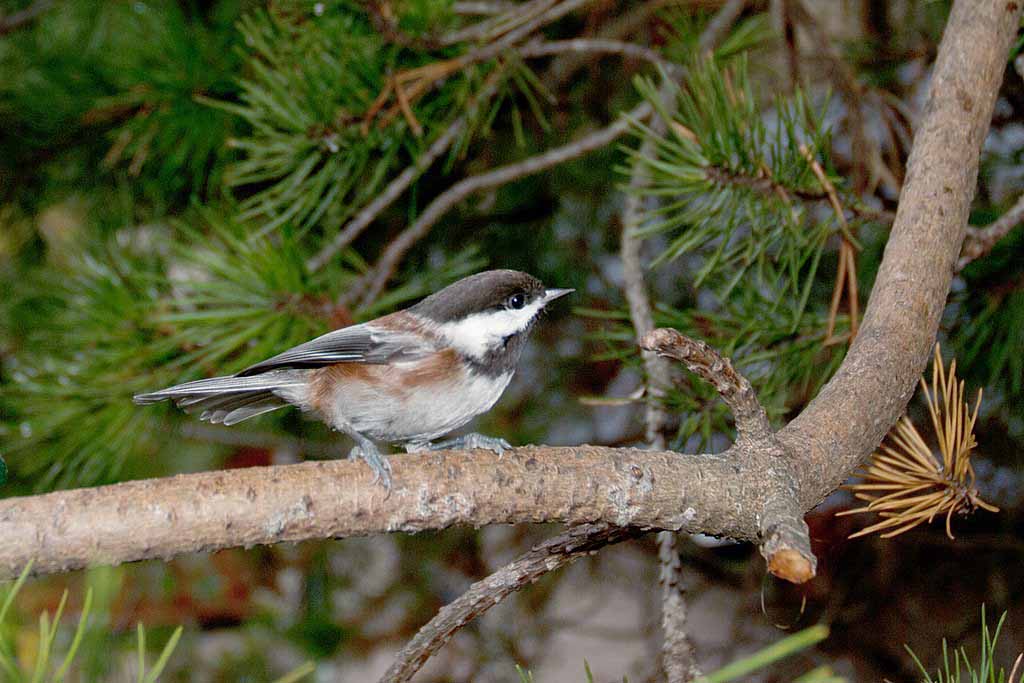
The chestnut-backed chickadee is a small bird native to North America. It is part of the tit family, Paridae, and was formerly known as Parus rufescens. This bird can be found throughout the Pacific Northwest, ranging from Alaska to California.
It is most common in the western United States and Canada, where its habitat is typically in coniferous forests and wetland areas. The chestnut-backed chickadee is a very small bird, with a length of around 4 inches and a wingspan of about 8 inches.
Its plumage is mostly a gray-brown color, with lighter white and black patches. The distinguishing feature of this species is the broad chestnut-colored patch that extends from its back to its wings.
This species is known for its cheerful song and can often be heard singing in the early morning hours. The chestnut-backed chickadee is an important part of the North American ecosystem, helping to pollinate flowers and disperse seeds.
It is also an important food source for other animals, such as owls and hawks.
| Kingdom | Animalia |
| Phylum | Chordata |
| Class | Aves |
| Order | Passeriformes |
| Family | Paridae |
| Genus | Poecile |
| Species | P. rufescens |
19. Bushtit
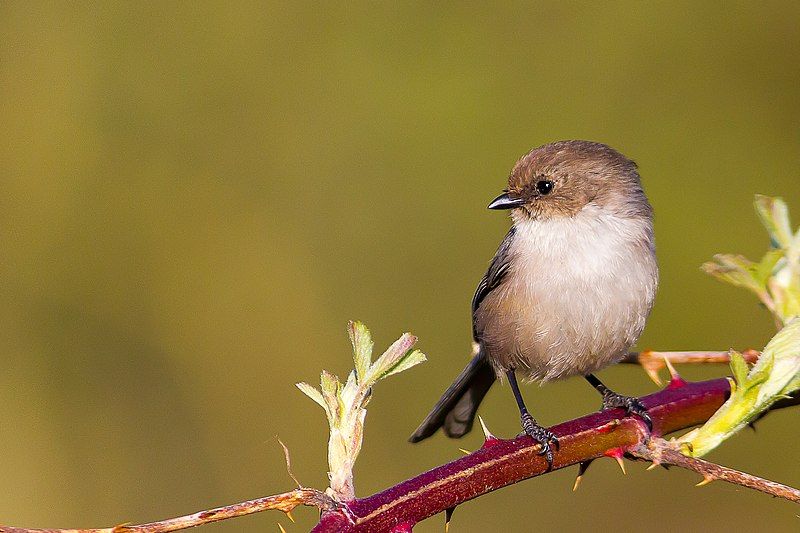
The American bushtit is a small, active bird that is found in the New World. It is the only species in the family Aegithalidae and is placed in the genus Psaltriparus. It is a very unique bird, with its plain gray-brown plumage and its small size.
It typically measures only three to four inches in length. The American bushtit is a social species, usually found in groups of five to fifteen birds. It feeds on insects and spiders, as well as some fruits and berries.
The American bushtit is native to western North America, ranging from Alaska to Mexico. It prefers to live in open woodlands, woodland edges, and shrubby areas. It builds its nest in a variety of locations, including trees, shrubs, and even human-made structures.
The nest is a cup-shaped structure made of moss, grass, and spider webs. The American bushtit is a unique bird that is found only in the New World. It is a social species that forms large flocks, and its small size and plain plumage make it easy to identify.
It is an important part of the natural environment, playing an important role in the food chain and helping to control insect populations.
| Kingdom | Animalia |
| Phylum | Chordata |
| Class | Aves |
| Order | Passeriformes |
| Family | Aegithalidae |
| Genus | Psaltriparus |
| Species | P. minimus |
20. Acorn Woodpecker
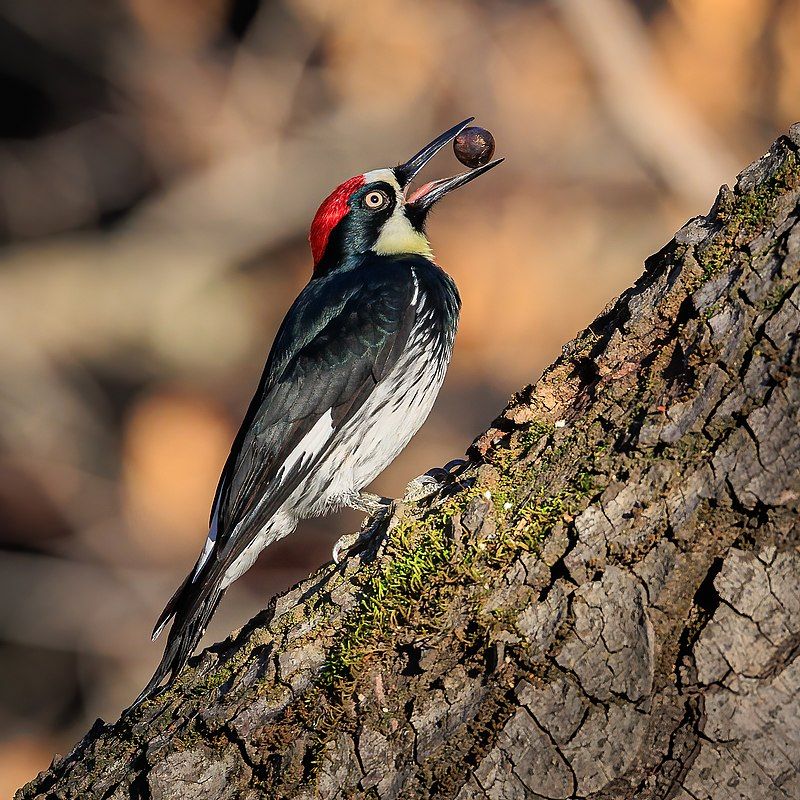
The Acorn Woodpecker is a fascinating bird, native to the western regions of North America. It is a medium-sized bird, measuring approximately 21 cm in length and weighing an average of 85 g.
Its most distinctive feature is its bright red head, which sets it apart from other woodpeckers. The body is black and white, with white spots on the wings and tail.
Its bill is long and pointed, and its legs are strong and well-suited for clinging to tree trunks. The Acorn Woodpecker is well known for its ability to store acorns in the crevices of trees and in other locations.
It has been reported that some Acorn Woodpeckers have created storage holes in which they can store up to 50,000 acorns. They also feed on insects, fruits, and nuts.
They are social birds, often living in large groups and communicating with a variety of calls. The Acorn Woodpecker is an important part of the natural ecosystem, and it is listed as a species of least concern by the IUCN Red List.
It is an important food source for many other animals, including raptors, foxes, and coyotes. Its presence also helps to disperse acorns, which can help trees to regenerate and provide important habitats for wildlife.
Therefore, the conservation of this species is important for maintaining the health of the natural environment.
| Kingdom | Animalia |
| Phylum | Chordata |
| Class | Aves |
| Order | Piciformes |
| Family | Picidae |
| Genus | Melanerpes |
| Species | M. formicivorus |
21. American Crow
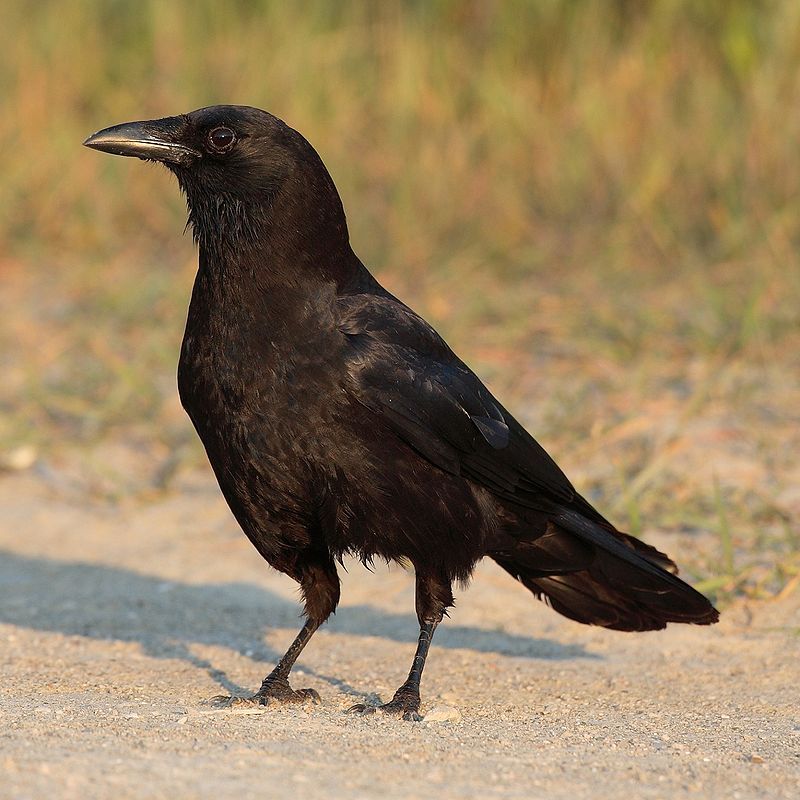
The American crow is a member of the Corvidae family, which is a group of passerine birds. It is a very common bird in North America, and its range extends from Alaska to Mexico.
The American crow is related to the carrion crow and the hooded crow of Eurasia, which all occupy the same ecological niche. This means that they all live in similar environments and are able to compete for the same resources.
American crows are known for their intelligence and are able to use tools to solve problems. They are also highly adaptable and can survive in a variety of habitats, which has allowed them to thrive in both rural and urban settings.
| Kingdom | Animalia |
| Phylum | Chordata |
| Class | Aves |
| Order | Passeriformes |
| Family | Corvidae |
| Genus | Corvus |
| Species | C. brachyrhynchos |
22. Nuttall’s Woodpecker
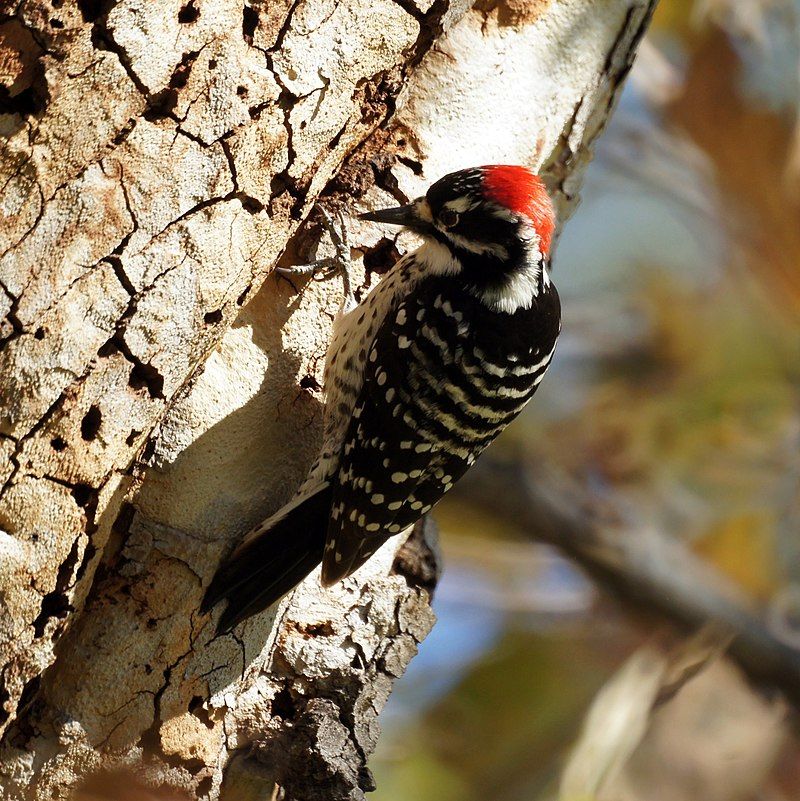
Nuttall’s woodpecker is a species of woodpecker that was named after the naturalist Thomas Nuttall in 1843. It is native to oak woodlands in California and is very similar to the ladder-backed woodpecker.
The two species have a very similar appearance and belong to the same taxonomic family. In terms of genetics, the two species are very similar, sharing many of the same characteristics.
The Nuttall’s woodpecker is quite small, measuring between 6 and 8 inches in length, and its plumage is primarily black and white. It has a distinctive white line along its back and a white stripe along its forehead. Additionally, Nuttall’s woodpecker has a red crown.
This species feeds mainly on insects, but it will also eat seeds and berries. It is an important species for the oak woodlands in California as it helps to control insect populations.
| Kingdom | Animalia |
| Phylum | Chordata |
| Class | Aves |
| Order | Piciformes |
| Family | Picidae |
| Genus | Dryobates |
| Species | D. nuttallii |
23. Northern Flicker
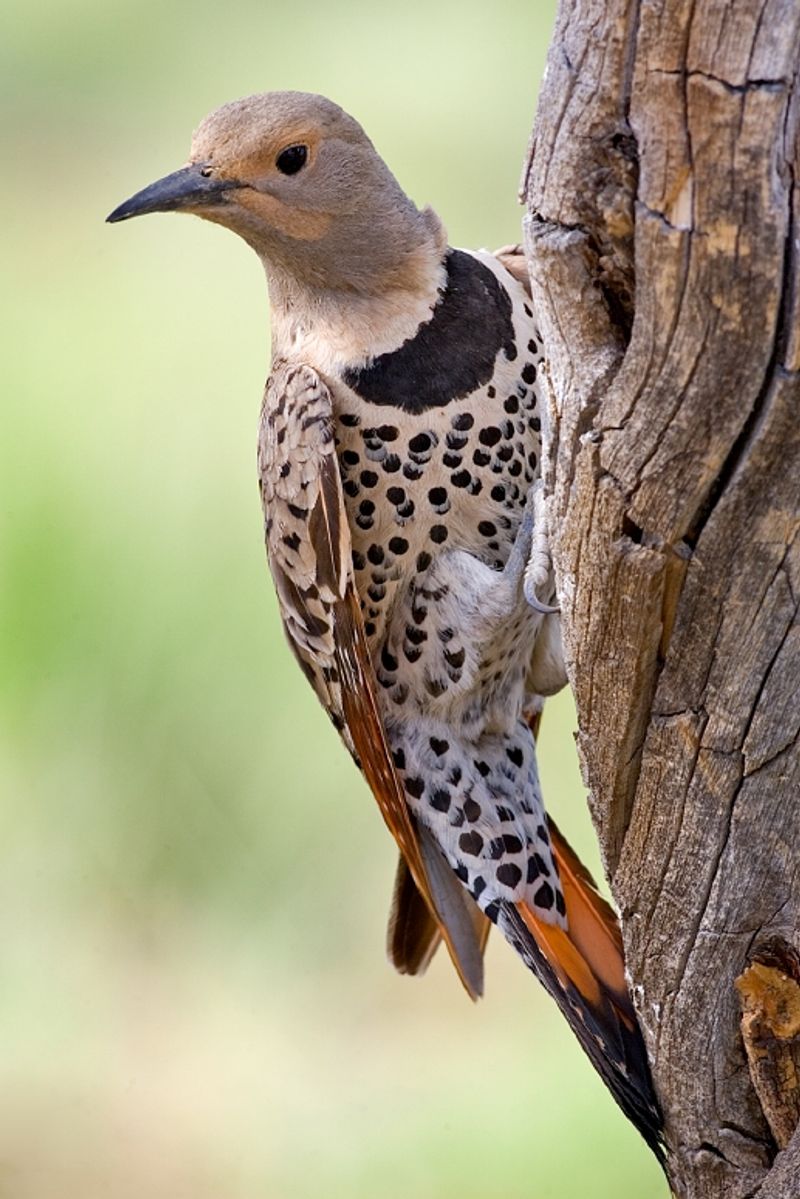
The northern flicker, also known as the common flicker, is a species of woodpecker from the Picidae family. It is native to most of North America, including parts of Central America, Cuba, and the Cayman Islands.
This species is distinguished from other woodpeckers in its family by its unique habit of migration. The northern flicker is considered a medium-sized bird, with a body length of around 11-14 inches and a wingspan of 14-16 inches.
It has a bright red neck and a black V-shaped pattern on its chest, with a yellowish-brown head and back. Its wings and tail are heavily barred with black and white. This species feeds mainly on ants and other insects, which it searches for on the ground.
It also eats seeds and fruits. Its call is a loud, rapid repetition of “wick-a-dee-dee”, making it easy to identify.
It is also known for its distinctive “drumming”, a sound made by the bird pecking on trees or other objects. The northern flicker is an important part of the North American ecosystem, as it is a keystone species in many forests.
It helps to disperse seeds and control insect populations, which helps to maintain a healthy balance in the environment. It is also a favorite of many birdwatchers, due to its beautiful plumage and unique behaviors.
| Kingdom | Animalia |
| Phylum | Chordata |
| Class | Aves |
| Order | Piciformes |
| Family | Picidae |
| Genus | Colaptes |
| Species | C. auratus |
24. Great Blue Heron

The great blue heron is a majestic species of bird belonging to the heron family Ardeidae. It is a large wading bird, typically measuring between three and five feet in length.
The great blue heron is found in various habitats across North and Central America, as well as South America, the Caribbean, and the Galápagos Islands. It is most common near the shores of open water and in wetlands.
The bird has a long neck and long legs which help it to wade in shallow water while it searches for food. Its wingspan is also quite impressive, reaching up to nearly six feet in length.
The great blue heron is a stunning sight to behold as it majestically soars through the sky, with its graceful wings and long neck. It is also a valuable species for the environment, as it helps to keep the balance of nature by eating fish, frogs, and other aquatic species.
The great blue heron is an important species to conserve, and its range is a testament to its ability to adapt to different environments.
| Kingdom | Animalia |
| Phylum | Chordata |
| Class | Aves |
| Order | Pelecaniformes |
| Family | Ardeidae |
| Genus | Ardea |
| Species | A. herodias |
Conclusion
Birds in Los Altos are an important and integral part of the local ecology. They not only provide food and shelter to other wildlife, but also help control pests, attract pollinators, and provide a vital link to the natural world.
Their presence and beauty bring joy to people in the area, while their songs provide a calming, peaceful backdrop to daily life. Birds in Los Altos are an important part of the local environment and should be protected and encouraged.